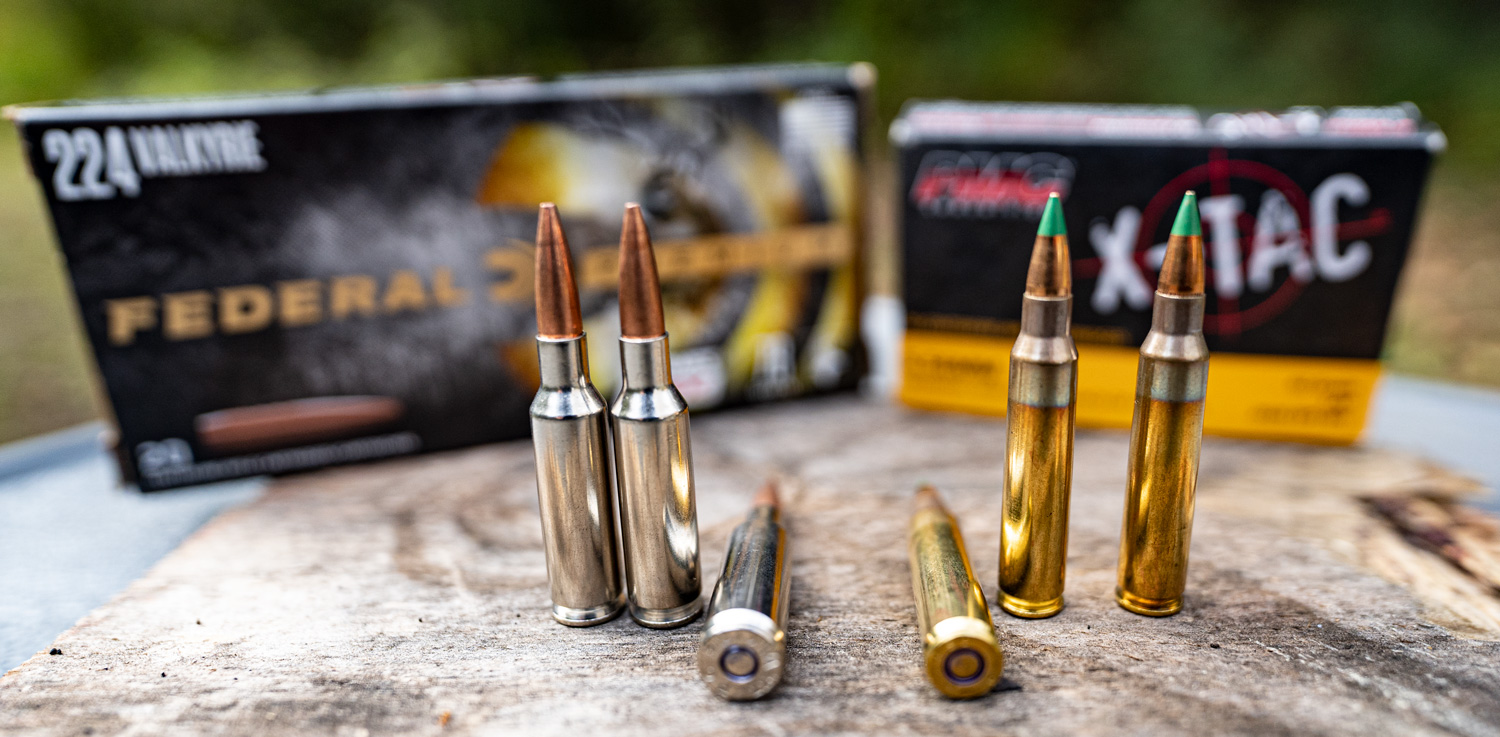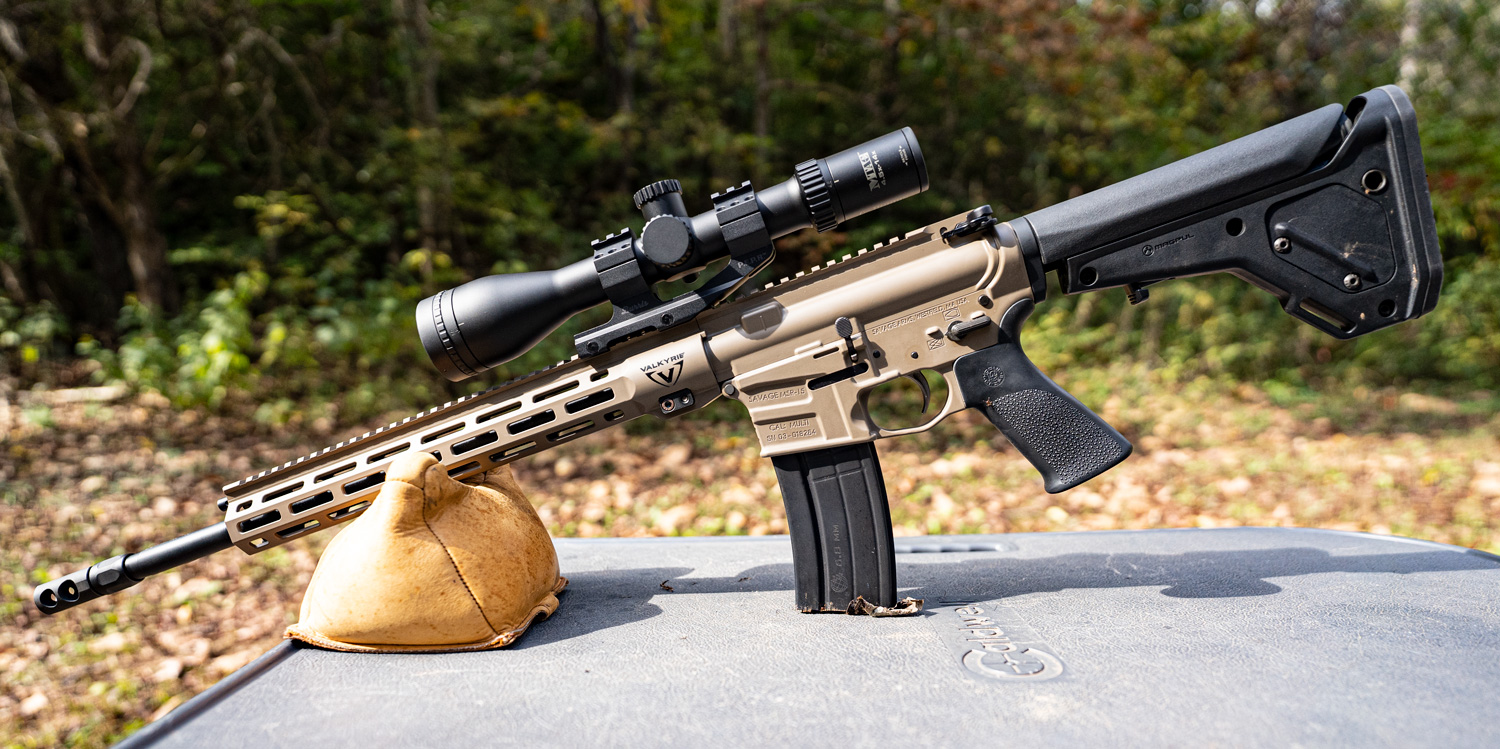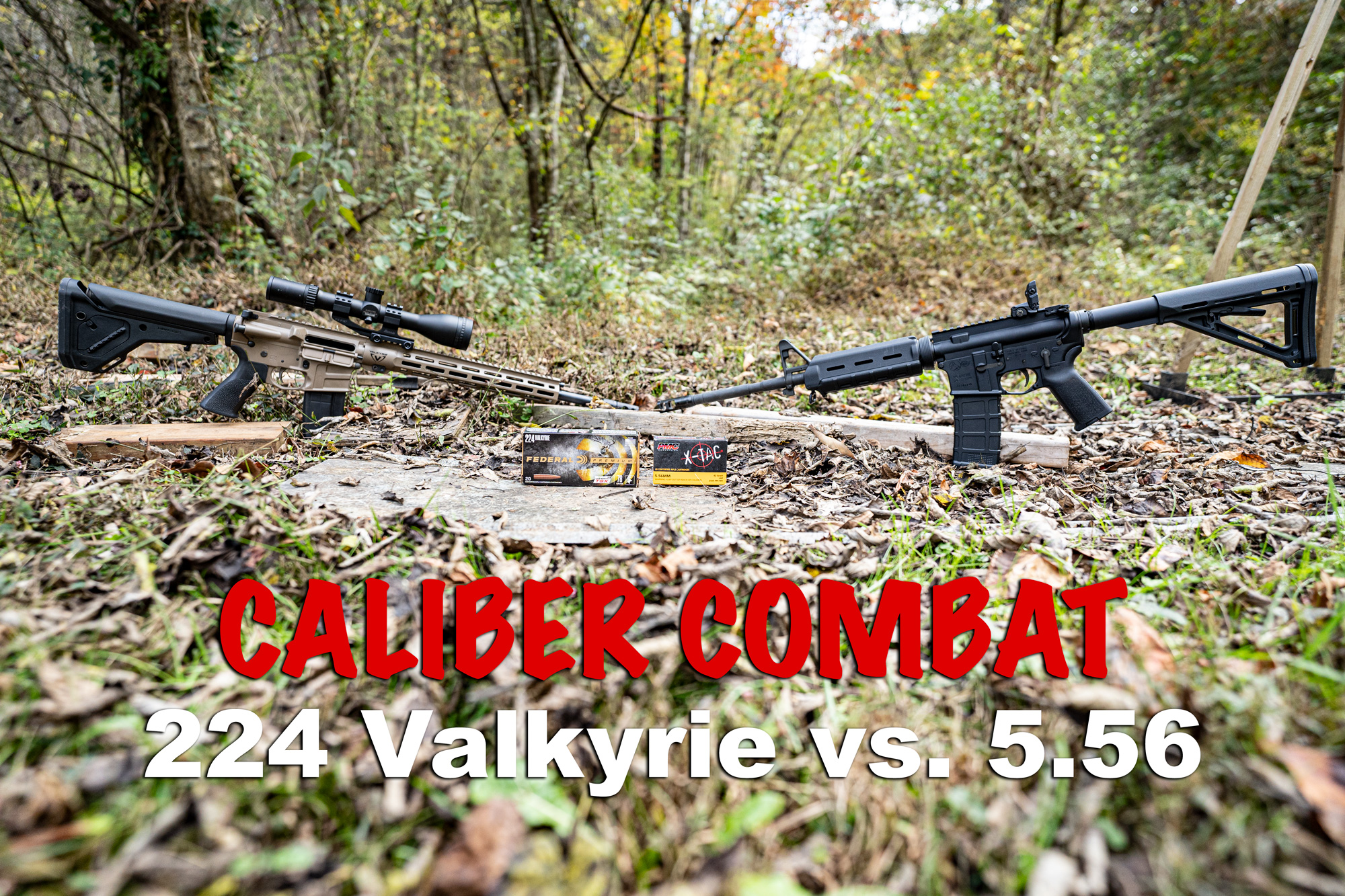What’s newer might also be better, but that doesn’t mean it’s going to dethrone an old standby. The 224 Valkyrie may very well outperform the 5.56×45 enough to obsolete it – on paper. Whether American shooters will abandon the classic AR-15 cartridge for one just introduced in 2017 is another matter altogether.
Federal designed the 224 Valkyrie for semi-automatic modern sporting rifles (although bolt-actions are available chambered for it as well). Federal did intentionally design the 224 Valk to outperform the 5.56×45, which means the two beg comparison.
So how does the 224 Valkyrie stack up against the 5.56? Is it superior enough to make a case for throwing away your old rifle? Or do the two rounds perform differently enough that they should coexist? We’re going to compare the 224 Valkyrie vs 5.56 so you can decide for yourself.
224 Valkyrie vs 5.56×45 – Specs
| 224 Valkyrie | 5.56x45 | |
|---|---|---|
| Bullet Diameter | .2245 | .224 |
| Neck Diameter | .256 | .253 |
| Shoulder Diameter | .4031 | .354 |
| Base Diameter | .4207 | .377 |
| Rim Diameter | .422 | .378 |
| Rim Thickness | .049 | .045 |
| Case Length | 1.6 | 1.76 |
| Overall Length | 2.26 | 2.26 |
| Primer Type | Small Rifle | Small Rifle |
| Maximum Pressure | 55,000 psi | 62,366 psi |
Case Size Comparison

The 224 has a significantly more spacious case than the 5.56. Its 34.5 gr H2O case capacity has 18.4 percent greater volume than the 5.56 at 28.5 gr H2O. This naturally gives room for more propellant, which the 224 puts to good use firing a larger bullet. You see, the 224 Valk’s bullet’s diameter alone doesn’t tell the entire story. It is longer than the 5.56 bullet. Plus, at 60 to 90 grains it is far heavier than the 5.56’s usual 55 to 77 grains.
224 Valkyrie’s greater case capacity means it is able to send a 75 grain bullet out of the muzzle at 3,000 fps. Compare this to classic 5.56×45 ammo with its 55 grain bullet and similar 3,250 fps muzzle velocity. This info helps us appreciate the 224 Valk’s great advantage: long distance accuracy.
A heavier bullet moving at the same velocity is naturally better at resisting deflection from crosswinds. Furthermore, it retains greater momentum so it can transfer more energy downrange.
224 Valkyrie vs. 5.56×45 – Trajectory

The 224 Valk’s long, slender, and heavy bullet conveys a very flat trajectory. And with its greater immunity to wind drift, the 224 makes long distance shooting more accessible to those who haven’t got the free time or land they need to study the 5.56’s bullet drop and windage.
This table shows how two similar rounds stack up to one another. When zeroed in at 200 yards the 224 Valkyrie vs 5.56 velocities and trajectories are virtually identical.
| Bullet | 88 Grain ELD Match | Bullet Drop | Bullet Drop | |
| Muzzle Velocity | 2675 fps | -1.5 | 2790 fps | -1.5 |
| 100 Yards | 2513 fps | 2 | 2564 fps | 1.9 |
| 200 Yards | 2356 fps | 0 | 2349 fps | 0 |
| 300 Yards | 2205 fps | -8.3 | 2144 fps | -8.2 |
| 400 Yards | 2060 fps | -23.7 | 1950 fps | -24 |
| 500 Yards | 1920 fps | -47.4 | 1764 fps | -49 |
| G7 Ballistic Coefficient | .274 | .2 | ||
At greater distances the rounds begin to behave noticeably differently. When zeroed in at 500 yards the 224’s higher ballistic coefficient lets it exhibit a slightly flatter trajectory:
Here is the key takeaway from all this: If you’re looking for a round that will give you a flatter trajectory for greater accuracy, the 224 can certainly help you. However, you’ll only reap an advantage while you’re shooting over very long distances.
Not all shooters care about pulling off 1,000 yard shots. If you’re one of them you may not find the 224 worth your trouble.
Energy Comparison: 224 Valkyrie vs 5.56
Because it has a larger propellant charge, the 224’s heavier bullet doesn’t necessarily suffer from a slower muzzle velocity than the 5.56. That means the 224 bullet is able to transfer significantly more energy over the same distances. Comparison of two rounds reveals 224 Valkyrie ammo is indeed more powerful.
| Barrel Length: 24" | ||||
|---|---|---|---|---|
| Bullet | 60 Grain V-MAX | Energy (ft. lbs.) | 55 Grain V-MAX | Energy (ft. lbs.) |
| Muzzle Velocity (fps) | 3300 | 1451 | 3240 | 1282 |
| Velocity at 100 Yds | 2924 | 1139 | 2854 | 995 |
| Velocity at 200 Yds | 2578 | 885 | 2500 | 763 |
| Velocity at 300 Yds | 2258 | 679 | 2172 | 576 |
| Velocity at 400 Yds | 1961 | 512 | 1871 | 427 |
| Velocity at 500 Yds | 1690 | 380 | 1598 | 312 |
| G1 Ballistic Coefficient | .265 | .255 | ||
Of course, in tactical situations where you’re unlikely to stand several hundred yards away from your assailant the difference between 1,139 and 995 ft lbs of energy is likely to be moot – land either round’s bullet in a human-sized target and it’s not likely to remain a threat for very much longer.
But consider the 224 Valkyrie’s flatter trajectory coupled with its marked energy advantage, and you can easily appreciate why more and more hunters are beginning to favor it for hunting predators and whitetail.
Recoil

You can calculate recoil energy with four variables: bullet weight (gr), bullet velocity (fps), powder charge weight (gr), and firearm weight (lbs). For the sake of comparing the 224 to the 5.56 in terms of their recoil, let us assume that both rounds have 25 grains of propellant and we are firing a 6.5 pound rifle.
| 224 Valkyrie | 5.56x45 | 224 Valkyrie | 5.56x45 | |
|---|---|---|---|---|
| Bullet weight | 88 Grain | 73 Grain | 60 Grain | 55 Grain |
| Bullet velocity | 2675 | 2790 | 3300 | 3240 |
| Recoil energy (ft lbs) | 6.34 | 5.27 | 5.09 | 4.49 |
Here the simple fact about recoil is quite obvious: Heavier bullets and faster muzzle velocities both contribute to greater recoil energy. That said, neither the 224 Valkyrie nor the 5.56 have very much recoil energy to offer, yet the 224’s recoil is going to be slightly more powerful. Keep in mind that the recoil you actually experience is bound to be subjective.
Availability and Affordability

Here is the best argument in favor of sticking with 5.56 instead of converting exclusively to 224 Valk. As the most popular rifle cartridge in the country, 5.56×45 is absolutely more available and affordable than 224 Valkyrie. The newer 224 is still a relatively niche cartridge, which alongside the fact that its larger size necessarily makes it more expensive to produce gives it a heftier price tag.
The Takeaway
The 224 Valkyrie offers a flatter trajectory, superior downrange energy, and negligible increase in recoil over the 5.56×45. Its superior performance may not provide any advantage to the casual shooter who isn’t concerned with long distance shooting, however, and its novelty means that ammo – as well as rifles and rifle parts – is simply less available and more expensive.
Of course, our hypothetical about ditching 5.56 in favor of 224 is exaggerated. Ideally you would be able to enjoy both rounds, preferring the 5.56 for casual plinking and range training while turning to the 224 when you’re trying to group shots through a bullseye at 1,000 yards or pick off distant whitetail.





Leave A Comment